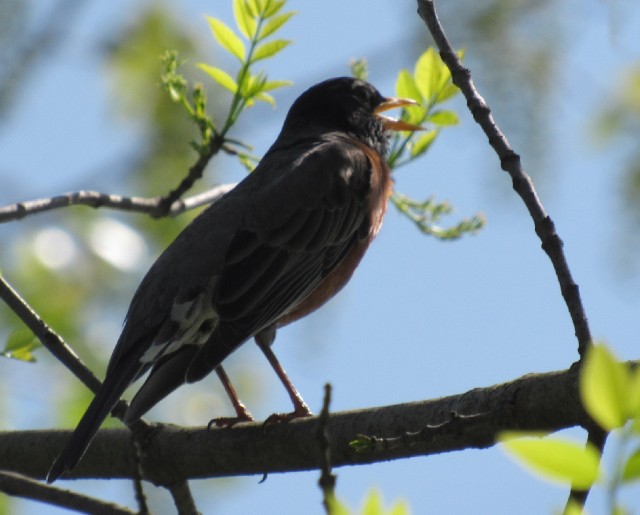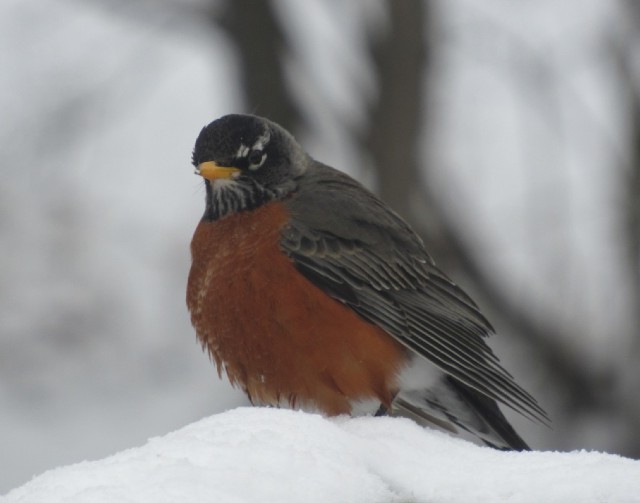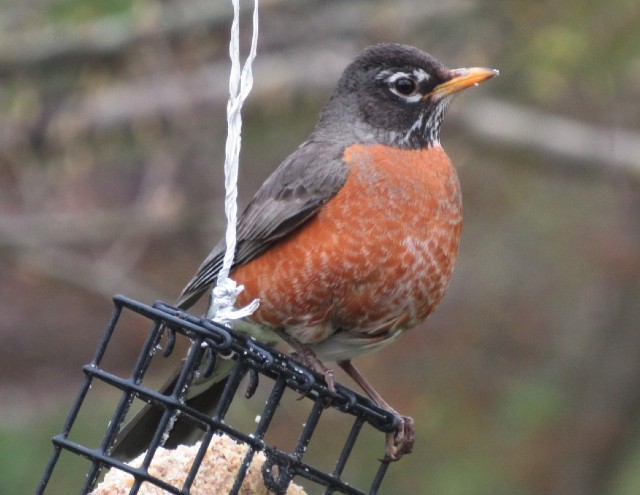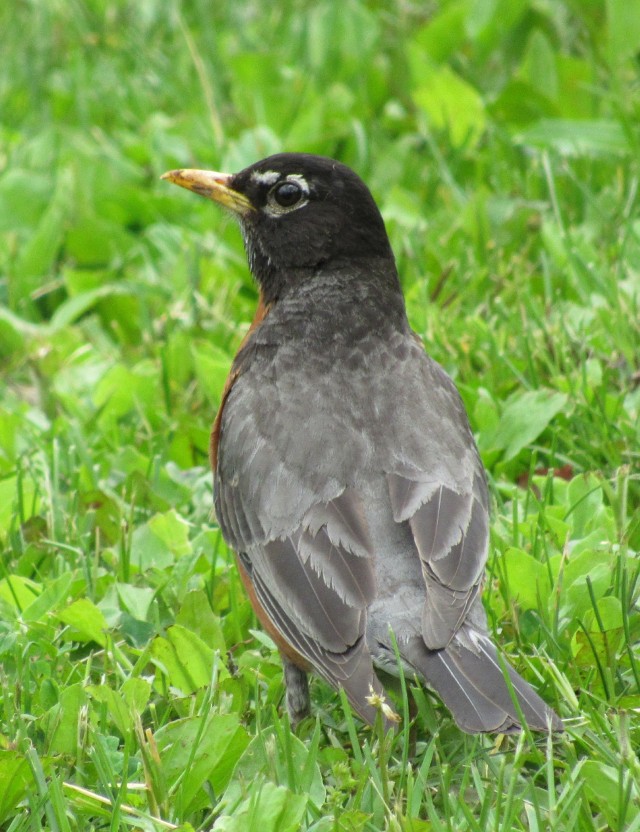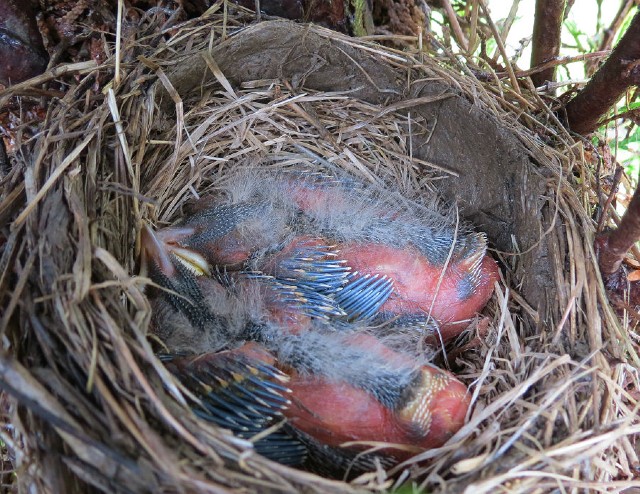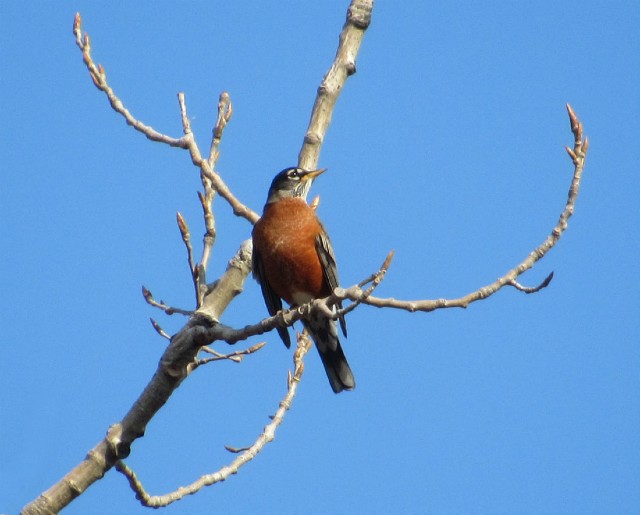Although they are considered harbingers of Spring, many American Robins spend the whole winter in their breeding range. Because they spend more time roosting in trees and less time on the ground, you’re much less likely to see them.
One of our most easily identified birds, this member of the Thrush Family is a large, sturdy songbird with long legs, a light yellowish bill and a long tail. It has an unstreaked, rusty-orange breast and a dark gray-brown back.
They are a common sight in our yard, especially after cutting the lawn, when I often see them tugging earthworms out of the ground. They eat different types of food depending on the time of day: more earthworms in the morning and more fruit later in the day.
The American Robin’s rich caroling is among the earliest bird songs heard at dawn in Spring and Summer, often beginning just before first light. This bird lives across North America and in parts of Central America. They can be found in open grassy areas, gardens and woodlands.
This bird’s nest is a deep, sturdy cup of twigs, grasses and mud – usually positioned in the crotch of a tree or a branch fork. We had a nest in the shrubs in our front yard. The female typically lays four pale blue eggs and incubates them alone. Both parents feed the young.
The American Robin is the state bird of Connecticut, Michigan and Wisconsin.

